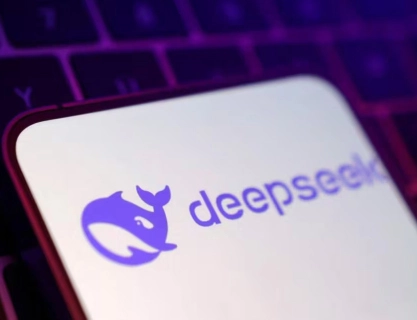Maria Arenas
In the rapidly evolving field of artificial intelligence (AI), DeepSeek, a Chinese startup based in Hangzhou, has emerged as a significant disruptor. Its innovative AI model, R1, has not only challenged established industry leaders but also prompted substantial market reactions and geopolitical discussions. With unprecedented capabilities and cost efficiency, DeepSeek may not only reshape tech industries but also position itself as a critical player in the geopolitical competition for dominance in AI and emerging technologies.
U.S. and Canadian stocks have reacted negatively to the innovation, falling in early Monday (27 January 2025) trading, with AI-focused names suffering the most. Notable losses as of 10:38 am include:
- NVIDIA (NASDAQ:NVDA), -13.42 per cent.
- Alphabet (NASDAQ:GOOG), -2.86 per cent.
- Microsoft (NASDAQ:MSFT), -3.07 per cent.
- Oracle (NYSE:ORCL), -8.53 per cent.
- Celestica (TSX:CLS), -15.93 per cent.
- Healwell AI (TSX:AIDX), -5.62 per cent.
- SoundHoundAI (NASDAQ:SOUN), -6.09 per cent.
DeepSeek’s rise is marked by its technological sophistication and versatility. Unlike earlier AI models, DeepSeek integrates multimodal data—text, images, audio, and video—allowing it to perform highly complex tasks in real time. Its ability to combine generative AI with advanced predictive analytics sets it apart, enabling applications across industries. DeepSeek’s R1 model has already made a notable impact on the market, and its future influence is poised to be significant. The company’s ability to develop a competitive AI model at a fraction of the typical cost has led to a reevaluation of investment strategies within the AI sector. Analysts suggest that DeepSeek’s approach could lead to reduced spending on high-end computing hardware, potentially decreasing demand for advanced chips from companies like Nvidia.
DeepSeek’s cost efficiency has undoubtedly amplified its disruptive impact. While advanced AI platforms often require extensive computational resources and significant operational costs, DeepSeek’s architecture leverages quantum computing synergies to optimise performance without an exponential increase in cost. This scalability has allowed even mid-sized businesses to access cutting-edge AI solutions, democratising access to technology in ways that rivals like OpenAI and NVIDIA have struggled to achieve. OpenAI’s GPT models, for instance, are renowned for their capabilities but remain resource-intensive, often requiring specialised hardware and significant investments. NVIDIA, a leader in AI hardware, has similarly dominated the GPU market but focuses on infrastructure rather than offering a fully integrated AI platform like DeepSeek.
DeepSeek’s R1 model has already made a notable impact on the market, and its future influence is poised to be significant. The company’s ability to develop a competitive AI model at a fraction of the typical cost has led to a reevaluation of investment strategies within the AI sector. Analysts suggest that DeepSeek’s approach could lead to reduced spending on high-end computing hardware, potentially decreasing demand for advanced chips from companies like Nvidia.
The immediate market response to DeepSeek’s emergence was evident, with Nvidia’s stock plunging nearly 18% and other tech stocks experiencing declines. The Nasdaq 100 fell about 3%, and the S&P 500 decreased nearly 2%. Companies such as Microsoft, Palantir, and Alphabet also saw their stock prices drop by around 4%, 6%, and 3%, respectively.
Looking ahead, DeepSeek’s cost-effective AI solutions may pressure U.S. companies to reassess their pricing models and investment levels in AI development. This could lead to increased competition and innovation, ultimately benefiting consumers and businesses seeking affordable AI applications.
The rise of DeepSeek has introduced a competitive dynamic in the technology sector that is reshaping the industry. OpenAI, with its flagship GPT models, has maintained a reputation for pushing the boundaries of natural language processing, but its reliance on proprietary ecosystems and higher operating costs has limited its accessibility for smaller players. NVIDIA, on the other hand, has revolutionised hardware acceleration for AI but lacks an all-encompassing software platform to rival DeepSeek’s holistic capabilities.
The company managed to train its R1 model using significantly fewer specialised computer chips than typically required. While most advanced AI models necessitate between 16,000 and 100,000 GPUs for training, DeepSeek accomplished this with just 2,048 GPUs running for 57 days. The model’s training consumed 2.78 million GPU hours on Nvidia H800 chips, which is remarkably modest for a 671-billion-parameter model. UNITE
In contrast, Meta’s Llama 3 model, with 405 billion parameters, required approximately 30.8 million GPU hours—about 11 times more computing power than DeepSeek’s R1. This efficiency not only reduced hardware costs but also minimized energy consumption, contributing to overall cost savings.
DeepSeek’s approach challenges the prevailing notion that developing high-performing AI models necessitates massive capital expenditure and access to the most advanced hardware. By optimising their algorithms and leveraging available resources effectively, DeepSeek has demonstrated that it’s possible to achieve top-tier AI performance more economically.
The disparity in investment approaches highlights a potential shift in the AI development paradigm. While U.S. tech giants have traditionally relied on substantial financial investments to achieve breakthroughs, DeepSeek’s success suggests that innovation and efficiency can serve as viable alternatives to large-scale spending.
The emergence of DeepSeek also reflects broader geopolitical dynamics, particularly in the context of the U.S.-China rivalry over critical technologies. DeepSeek’s development indicates a challenge to the continued dominance of the United States in AI innovation, supported by a robust ecosystem of research institutions, venture capital, and private sector collaboration. However, this success also underscores the vulnerabilities in U.S. technology policy. As the global leader in AI, the U.S. must contend with the risks of technology transfer, intellectual property theft, and adversaries reverse-engineering advanced systems like DeepSeek for strategic gains. China, in particular, has prioritised AI within its “Made in China 2025” strategy and is likely to respond to DeepSeek’s disruption by doubling down on state-backed AI initiatives, leveraging its vast data reserves and control over critical supply chains like semiconductors.
DeepSeek’s rise has prompted urgent discussions about the role of policy in safeguarding and advancing critical technologies. U.S. measures such as the CHIPS and Science Act, which aims to reduce reliance on foreign semiconductor manufacturing, are essential for maintaining the technological infrastructure that underpins platforms like DeepSeek. Additionally, export controls on advanced AI technologies and semiconductors must be strengthened to prevent misuse by adversaries. However, these measures alone are insufficient without a broader strategy to address emerging challenges, including ethical considerations, workforce displacement, and global inequality in access to AI.
In January 2025, President Donald Trump signed an executive order emphasising the need for the United States to maintain global leadership in AI technology. The order advocates for developing AI systems free from ideological bias and seeks to remove barriers to American AI innovation. Furthermore, the Trump administration has signalled an aggressive stance in the AI race against China, emphasising the need to outpace Chinese advancements. The success of DeepSeek, achieved despite U.S. sanctions restricting China’s access to advanced semiconductors, raises questions about the effectiveness of such measures. It suggests that Chinese firms can innovate around these constraints, potentially diminishing the impact of U.S. policies aimed at limiting China’s technological progress.
At the same time, DeepSeek’s rise underscores the need for global collaboration in AI governance. As advanced AI systems become more pervasive, ensuring their ethical use will require coordinated international efforts. Democracies must lead in establishing transparent standards for AI development, addressing issues such as bias, privacy, and accountability. Conversely, authoritarian regimes may exploit AI for surveillance and control, highlighting the ideological divide shaping the future of technology.
DeepSeek represents a transformative force in the AI landscape, disrupting markets, redefining competition, and influencing geopolitical strategies. Its cost efficiency, technological versatility, and accessibility position it as a leader in the next phase of AI development, challenging established players like OpenAI and NVIDIA. However, its rise also highlights critical policy and ethical challenges that must be addressed to harness AI’s potential while mitigating its risks. As the world navigates this new era of technological disruption, DeepSeek’s success serves as both a testament to innovation and a call to action for governments, businesses, and societies to adapt to the profound changes it brings.






